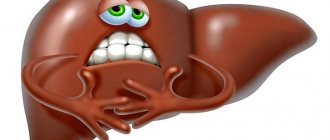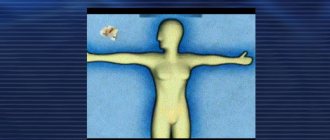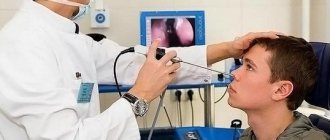Pseudomonas aeruginosa (pseudomonas) is a motile bacterium that has a rod-shaped shape. It is one of the most mobile among microorganisms .
Its ability to survive for a long time in extreme environmental conditions, but at the same time still have good resistance to the effects of most antibiotics, is amazing!
Therefore, treating Pseudomonas aeruginosa with folk remedies is just as difficult as using traditional methods, but it is still possible.
This type of bacteria causes a lot of trouble in clinics, hospitals and swimming pools . Taking into account that these institutions are visited by hundreds and thousands of people every day, it becomes clear why Pseudomonas aeruginosa is called the scourge of these places.
Etiology
This bacterium does not always cause disease when it enters the human body. Because of this, Pseudomonas aeruginosa is considered opportunistic. In addition, most often the bacterium enters the body during a person’s stay in a medical institution. Reasons that increase the likelihood of infection with this type of bacteria and the further development of pathologies that it can cause:
- a large number of bacteria entering the body;
- weakened immune system;
- long stay in hospital;
- prolonged use of penetrating methods of therapy. This is catheterization of veins or bladder, artificial ventilation of the lungs, insertion of a probe into the stomach, etc.;
- prolonged use of broad-spectrum antibiotics and/or hormonal drugs;
- respiratory diseases;
- improper development of the genitourinary system;
- acquired immunodeficiency syndrome;
- age. Newborns and, on the contrary, older people (over 65 years old) are more susceptible to Pseudomonas infection than other patients.
This bacterium is called a nosocomial infection, because it causes about 50% of diseases in the hospital. This is due not just to the poor sanitary conditions of the institution, but also to the amazing immunity of the bacteria to antibiotics and disinfectants. means.
How is Pseudomonas aeruginosa transmitted?
The following transfer methods exist:
- by airborne droplets (when sneezing, coughing, talking);
- food (through poorly processed meat, milk or water);
- contact method (through household items, doors, tools, towels, taps).
An infection can occur:
- through wounded skin;
- through the eyes;
- through the mucous membrane of internal organs: bronchi, bladder, urethra, trachea;
- through the gastrointestinal tract - when food infected with bacteria enters it.
But most often pseudomonas is transferred from the person’s own body, from the respiratory tract or from the intestines, where it is normally found.
People can become infected with Pseudomonas aeruginosa:
- a person who coughs and is a carrier of a stick;
- if a person suffers from pseudomonas stomatitis (a disease of the oral mucosa), then he spreads pseudomonas when sneezing or talking;
- a carrier of the bacterium (just a healthy person), if pseudomonas is in the nasopharynx;
- in the case when a person with purulent wounds on the hands or on uncovered areas of the body is engaged in cooking;
- The main route of infection is during manipulations in a hospital setting.
Important reminder : bacteria can cause disease if:
- it enters the body in large quantities;
- she was brought to places where there should be absolute sterility;
- when it gets on damaged skin or mucous membranes that have contact with the environment (nose, lips, mouth, conjunctiva, nasopharynx, urinary canal, genitals, anus);
- with reduced local immunity of the skin or mucous membrane;
- with reduced body defenses.
Pseudomonas aeruginosa is very well “fixed” in the mucous membranes, for example, if a person received even a small dose of it, and after that visited the pool, went to the bathhouse or sauna, it continues its vital activity in the human body.
Who is at risk of infection?
Pseudomonas aeruginosa is especially dangerous for:
- elderly people over 60 years of age;
- newborns up to three months of age;
- people with weakened immune systems;
- those suffering from cystic fibrosis;
- those in need of hemodialysis;
- suffering from diabetes;
- HIV-infected;
- those who received burns;
- patients with leukemia;
- people who have undergone organ transplantation;
- people who use hormonal drugs for a long time (for example, for the treatment of lupus erythematosus, rheumatoid arthritis or other systemic diseases);
- having defects in the development of the genitourinary system;
- patients with chronic bronchitis;
- forced to stay in hospital for a long time.
Transmission routes
Pseudomonas aeruginosa is transmitted from carriers of infection (from humans and animals) in the following ways:
- contact and household paths. This is the most common method of disease transmission. Often the infection spreads to a healthy person through household items;
- food route. You can get this bacterium if you eat meat or drink milk or water that contains Pseudomonas aeruginosa;
- airborne route. The microbe enters during inhalation of air that contains the infection.
The greatest danger is posed by people suffering from pneumonia or having purulent wounds. Even timely and competent treatment of such patients may not bring the expected results.
Symptoms and pathogenesis
Depending on the location of the disease, the symptoms and mechanism of development vary. The location of inflammation depends on how the infection entered the body. In especially severe cases, not one, but several organs are affected.
- CNS infection. This is one of the most severe and dangerous lesions of Pseudomonas aeruginosa. Experts distinguish between primary and secondary inflammation of the central nervous system. During primary development, the infection enters the central nervous system in the following ways: spinal puncture, head trauma, spinal anesthesia. Secondary damage involves the introduction of the microbe from other foci of infection through the blood. Doctors identify the following clinical forms of infection with Pseudomonas aeruginosa: meningitis and meningoencephalitis. As is known, these ailments can be explained by the activity of another pathogen. The symptoms are always the same, so a person may not know for some time that he has Pseudomonas meningitis or meningoencephalitis and undergo the usual treatment for these diseases;
- ear disease. Often, Pseudomonas aeruginosa in the ear is the cause of external otitis. Its main symptom is bloody-purulent discharge that continues for a long time. In addition, a person may complain of discomfort in the ears. Sometimes the bacterium contributes to the appearance of lesions in the middle ear and mastoid process;
- infection in the throat. Symptoms of Pseudomonas aeruginosa in the pharynx: swelling and redness of the mucous membrane, discomfort in the throat, inflammation of the tonsils, cracks in the lips, increased body temperature;
- nose disease. This bacterium causes prolonged rhinitis and chronic sinusitis (less commonly sinusitis). The symptoms of diseases caused by this stick and diseases caused by other microbes are the same;
- infection in the gastrointestinal tract. Pseudomonas aeruginosa can cause illness in almost every part of the digestive tract. Often, inflammation of the gastrointestinal tract is observed in adults suffering from immunodeficiency conditions and in newborns. In any case, inflammation has several periods of development. The latent period is the time from the direct penetration of the microbe into the body until the manifestation of the disease - equal to several hours. In some cases, the latent period lasts up to five days. Then it all depends on the age of the person.
Damage to Pseudomonas aeruginosa
In young children, the large or small intestine is affected, and in particularly severe cases, the inflammation spreads to the stomach (gastroenterocolitis appears). Children's body temperature increases, vomiting begins and their general health worsens. In addition, liquid green stool with mucus appears. If Pseudomonas aeruginosa enters the body of school-age children or adults, then the development of the disease follows the principle of food poisoning:
- diseases of soft tissues and skin. Pseudomonas aeruginosa can easily penetrate the human body through damaged skin, deep wounds, ulcers and bedsores. Often inflammation begins in infants and adults with poor immunity;
- infection in the urinary organs. Inflammation often occurs in children, the elderly and patients with poor immunity. The infection is manifested by the appearance of urethritis, cystitis and pyelonephritis;
- lung diseases. The disease can appear in people of any age, but it is most often observed in children in the first two years of life. If Pseudomonas aeruginosa is present in a person’s lungs, then pneumonia takes a very long time and is extremely difficult, because they cannot be treated with usual means;
- infection in the eyes. In most cases, inflammation appears after an injury to the eyeball or surgery. The bacterium contributes to the development of conjunctivitis, keratitis or panophthalmitis. A person begins to be bothered by discomfort in the eye and a constant feeling that there is a foreign object in the eyeball. Sometimes purulent discharge is present. If treatment is not started in time, the patient’s condition will only worsen, and he may even lose his sight.
The main symptoms of infection with Pseudomonas aeruginosa
Below we present signs of diseases caused by Pseudomonas aeruginosa if treatment with antibiotics has not yet been carried out.
If a person has already received the necessary therapy, the clinical picture is symptoms, most often very blurred and not clearly expressed.
Pseudomonas aeruginosa infection of the ENT organs
If pseudomonas has “settled” in the pharynx, the following symptoms are distinguished:
- sore throat that gets worse when swallowing;
- increased body temperature;
- redness and swelling of the tonsils;
- cracks on the lips.
If a pseudomonas infection has developed in the throat, the following signs appear:
- cough, often dry, which occurs after discomfort or sore throat, aggravated by a horizontal position;
- increased body temperature;
- general weakness;
- fast fatiguability.
If Pseudomonas aeruginosa “settles” in the nose , in most cases this leads to the development of a prolonged runny nose, a feeling of severe nasal congestion, a deterioration in the sense of smell, periodic pain in the head, but more often on one side, closer to the forehead.
Pseudomonas aeruginosa in the ear can cause otitis externa, which manifests itself as follows:
- earache;
- the appearance of thick yellow-green-bloody discharge from it;
- hearing impairment;
- increase in body temperature.
To consult with an ENT doctor, just discharge with pus from the ear will be enough.
Self-medication in this case is very dangerous, since otitis externa as a result of infection with Pseudomonas aeruginosa can progress quite quickly, contributing to inflammation of the middle ear and the accumulation of pus in the mastoid sinuses.
But the most dangerous thing is that it can lead to inflammation of the meninges..
Pseudomonas aeruginosa infection of the digestive system
If even a small amount of pseudomonads appears in the intestines , there is a high probability of developing symptoms of infectious gastroenterocolitis. This:
- at the very beginning, vomiting of only eaten food, palpable pain “in the pit of the stomach”;
- then the pain moves to the navel area and becomes more diffuse;
- weakness occurs;
- loss of appetite;
- severe nausea appears;
- body temperature rises to low levels (may not reach 38);
- stools are quite frequent: up to 7 times a day, greenish, mushy;
- Blood impurities may also appear in the stool in the form of streaks or, in severe cases, intestinal bleeding;
- all painful sensations end within 3-4 days without therapy, but the infection already becomes chronic, less often into asymptomatic carriage.
If this condition occurs in an HIV-infected person, or someone who has undergone organ transplantation, who is being treated with glucocorticoid hormones, or who has recently undergone radiation or chemotherapy, Gram-negative pseudomonas sepsis may occur.
Pseudomonas aeruginosa infection of the urinary system
A number of diseases - cystitis, pyelonephritis, urethritis - are diagnosed by the presence of Pseudomonas aeruginosa in the urine.
In most cases, the infection ascends into the urinary tract, and from there the pathogen can be detected in the blood, and therefore spreads to other organs.
Such pathologies cannot develop out of nowhere. People who suffer from Pseudomonas aeruginosa infection in their urine:
- with low immunity;
- those who have various anomalies in the development of the genitourinary organs;
- having kidney stone disease;
- people who catheterize their bladder (for example, with prostate adenoma).
Aggressive Pseudomonas aeruginosa infection can also occur on the nails . The bacteria can become lodged between the nail bed and the nail plate or between the artificial and natural nail plates.
Moisture creates favorable conditions for the growth and reproduction of this bacterium. As a result of exposure to Pseudomonas aeruginosa, the nail plate becomes softer and darker, and the infection penetrates into deeper and deeper tissues. In this case, detachment of the entire nail plate may occur.
At what temperature does Pseudomonas aeruginosa die? The bacterium grows and reproduces most actively at a temperature of 37 degrees Celsius, but even at very high temperatures (up to 42°C) it continues to exist. At a temperature of 43°C, the pseudomonad dies.
“Weapons” of Pseudomonas aeruginosa
Pseudomonas aeruginosa “deals a strong blow” to the human body due to the fact that:
- She can move with the help of flagella.
- Produces a strong toxin as a product of its own vital activity before its death.
- It produces certain substances that damage liver cells, “burst” red blood cells, kill white blood cells, and affects immune cells that are designed to fight various infections.
- Synthesizes substances that kill other bacteria - “competitors” at the site of entry.
- “Sticks” to each other and to surfaces, becoming covered with a kind of “biofilm” that is insensitive to antiseptics, antibiotics and disinfectants. Therefore, pseudomonas colonies live on catheters, endotracheal tubes, hemodialysis and respiratory equipment.
- Produces enzymes that break down proteins, so Pseudomonas aeruginosa in the place of accumulation in large quantities causes death.
The course of the disease in children
In children, Pseudomonas aeruginosa infection is much more severe than in adults. It's all about the child's fragile body. In addition, Pseudomonas aeruginosa can cause dangerous diseases that will be very difficult for the baby to fight. Experts identify several features of the course of this infection in children:
- children suffer from this disease ten times more often than adults;
- often the disease affects premature babies and toddlers in the first few months of their life;
- the bacteria can live in a child’s body for a very long time, which is why infected children pose a danger to other children;
- In a school-age child, this infection is extremely rare;
- most often the microbe enters the child’s body through the umbilical cord, skin and gastrointestinal tract;
- The most difficult thing for a child is inflammation of the gastrointestinal tract. This is due to toxic effects and severe dehydration.
Cystic fibrosis in children
Consequences
In most cases, the infection is severe. According to statistics, about 70% of people suffering from meningitis, intestinal infections, pneumonia and sepsis die, even if they are treated promptly by a professional. If the patient has a chronic form of the disease, then correct therapy gives a positive result. Unfortunately, this does not apply to people with cystic fibrosis who are infected with this infection. It is very difficult to treat such patients, because their body is not affected by the usual therapy.
Diagnostics
Laboratory research
- Clinical blood test;
- Blood culture for sterility;
- Urinalysis (general and culture);
- Sputum culture (for pneumonia);
- Puncture and analysis of cerebrospinal fluid.
Imaging studies
- X-ray of the chest organs;
- Computed tomography and magnetic resonance imaging;
- Ultrasonography;
- Echocardiography.
Other tests
- Bronchoscopy;
- Thoracentesis;
- Lumbar puncture;
- Ophthalmological and ENT examinations.
Treatment
Treatment begins only after the doctor has confirmed the diagnosis. To identify Pseudomonas aeruginosa infection, specialists take a culture from the inflamed area and blood (to detect antigens of this bacterium). The doctor prescribes only comprehensive treatment, including:
- antibiotics. Experts choose a drug, taking into account the sensitivity of the pathogen to a particular drug, the severity of the disease, the form of the disease and the individual characteristics of the person. When treating a child, the doctor replaces the antibiotic if it does not bring any results after five days of use;
- bacteriophages. Here, too, it is necessary to determine the sensitivity of the rod to a specific bacteriophage. This treatment is aimed at getting rid of an infection localized anywhere;
- vaccine. This treatment forms active immunity against the specified microbe. Remember that the vaccine is not administered to a child (the patient must be at least 18 years old);
- probiotics and prebiotics. These funds are aimed at treating gastrointestinal diseases and restoring normal microflora in the intestines. Prebiotics can even be administered to an infant.
- restorative treatment. This is a special diet that excludes fried, fatty and spicy foods. In addition, a person should take vitamins. This is especially true for a child, because his body is not yet strong.
Prevention of infection with Pseudomonas aeruginosa
Prevention of such a disease is somewhat difficult, since pseudomonas is resistant to a large number of various disinfectants.
But even in this case, the necessary security measures should be taken:
- Hospitals regularly treat equipment with a special solution of carbolic acid, chloramine and hydrogen peroxide. In addition, health care personnel should systematically autoclave and boil equipment;
- Be sure to wash your hands after gardening and dacha work, as well as before eating;
- use only personal hygiene products: from toothpaste to foot towel;
- Chronic diseases should be treated correctly;
- maintain immunity at a high level;
- a healthy lifestyle, which includes not only proper nutrition, but also other activities that strengthen the body.
Outside the hospital, the risk of infection with this bacterium is extremely small, but despite this, everyone should strive to follow simple rules to prevent the disease.
After all, you will agree that it is much easier to prevent the development of a disease than to treat it later for a long, difficult and expensive time.
ethnoscience
Some people use not only antibiotics, probiotics, prebiotics, vitamins, bacteriophage, vaccine, but also treatment with folk remedies. But it is important to remember that these drugs should be used only in combination with the main therapy, especially if you need to treat a child. People use the following folk remedies:
- decoction of viburnum berries;
- a decoction of aspen, lingonberry or horsetail leaves;
- lotion of sunflower oil and tea tree oil;
- ointments with propolis.












